Every organism – including bacteria – want to grow and survive. And often, they feel most comfortable in a specific host. This host can be anything from a plant, an animal, another unicellular organisms or our human bodies.
However, to get into a human body, a bacterium needs to have certain mechanisms to stick to it and then to enter it.
Plus, the intruding bacteria need to overcome the defence mechanisms of the host itself. These defences can be our friendly bacteria that fight pathogenic bacteria or the immune system that sends off fighters. Also, our own microbiome works like a block against incoming new microbes.
And yet, some pathogenic bacteria developed some clever ways to stick to a host and infect it. Here, we will look at the different steps of how bacteria attach to a host and infect it.
Bacteria stick to a host
For a bacterium to infect a host cell, it first need to understand that it is actually close to one. For this, bacteria have so-called pili, which look like thin hairs sticking out of them.
These pili have special little patches at their ends. And when such a patch finds the right cell type, it can stick to it. Like this, certain bacteria can only stick to a specific host cells.
For example, the uropathogenic bacterium Escherichia coli can infect our bladders. This means that this bacterium has special patches at its pilus that specifically stick to cells in our urogenital tract.
Now, that the bacterium knows that it is close to a host cell, it shortens the pilus. This movement pulls the bacterium close to the cell itself.

The next step for the bacterium is to connect tightly to the host cell.
Bacteria connect to a host
To attach tightly to a host, pathogenic bacteria have little hooks called adhesins. These proteins can bind to specific components on the surface of the host cell.
So, after a bacterium pulled itself close to a cell, the adhesin binds to the cell more tightly. Also, not every bacterium has the right adhesin to binds to every host cell. Again, for this binding mechanism to work, they need specific adhesins for specific cells.
From this tight binding, the bacterium can easily enter the host cell. Once inside, it fires off its weapons like the T3SS or the T6SS. In the end, these weapons are what make the cell sick.
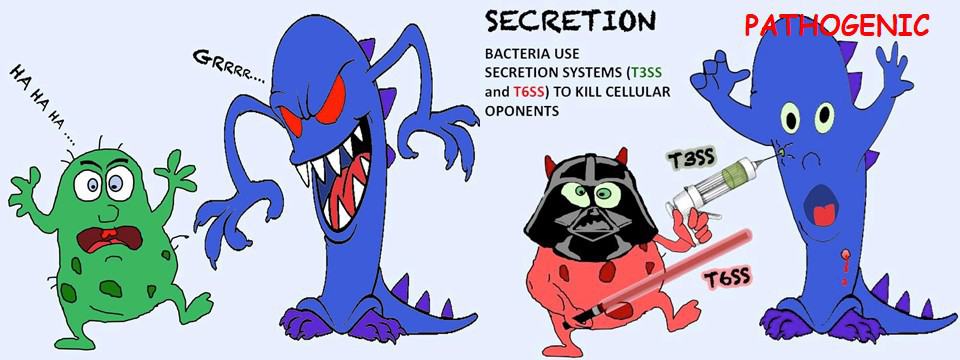
How a host fights off invading bacteria
Obviously, our body doesn’t want to get sick. Hence, it will not allow bacteria to easily invade us. This is why we have many different strategies to protect us from foreign microbes, toxic molecules or anything that could be harmful for us.
Here, we will look at a few mechanisms that our body uses to get rid of pathogenic bacteria.
Washing bacteria off
To avoid that bacteria come and attach to our cells, our body uses shear stress. This means that there is a constant flow of either air or blood to wash off all bacteria from the cells, so they don’t get (too) attached.
For example, in our nose we have little hairs which move with every inhale and exhale. These moving hairs are trying to wipe off incoming bacteria.
And don’t forget our very own microbiota. The good bacteria on our body also help us fight off incoming bad bacteria.
Fighting off bacteria
Our body developed a whole army that is trained to recognise and fight foreign microbes and bacteria. This is the immune system that consists of many different players that work together in incredibly complex mechanisms with the goal to protect us.
And some of these players are specifically trained to fight off incoming pathogenic bacteria.
For example, macrophages swim around our body always on the lookout for invading bacteria. There is this amazing video in which a macrophage chases a single bacterium and guess who wins?
However, many pathogenic bacteria found ways to escape these host immune cells. They have so-called flagella which they use to swim away from the immune cell.
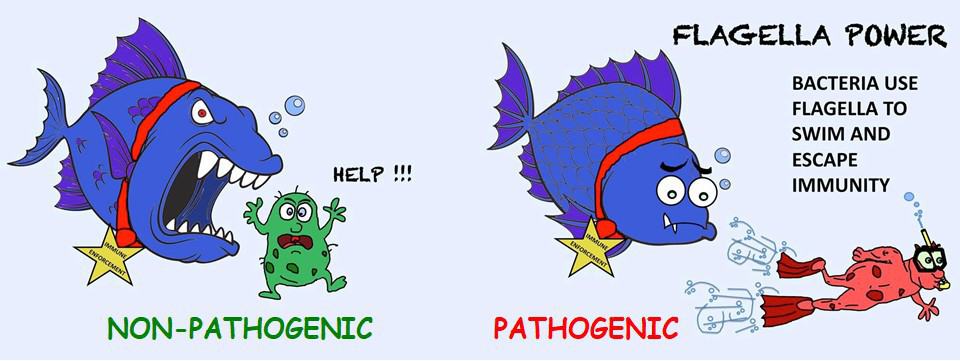
How bacteria get too attached to a host
Here, we had a quick glimpse into the life of a pathogenic bacteria and how they infect a host. By better understanding how bacteria connect to hosts, we can develop more practical treatments to inhibit this mechanism. This would eventually keep bacteria from sticking to host cells and infecting them. In general, that would keep us free of disease and infections.
If you want to learn more about any of these steps here, please leave a comment in the boxes below. We will explore those topics in upcoming blog stories. We are looking forward to your ideas!





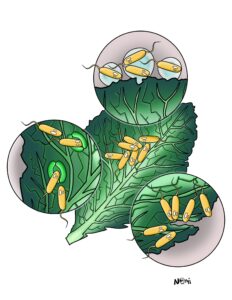

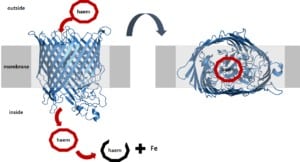
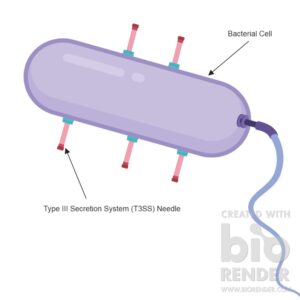
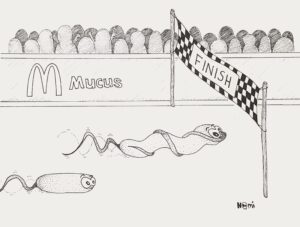

2 Responses
In which way do you consider the immune system to be the bad side of microbiology? Is it the bad side as in the more boring?
The bad side as in the immune system is supposed to destroy bacteria, which in general I just can’t support ;)